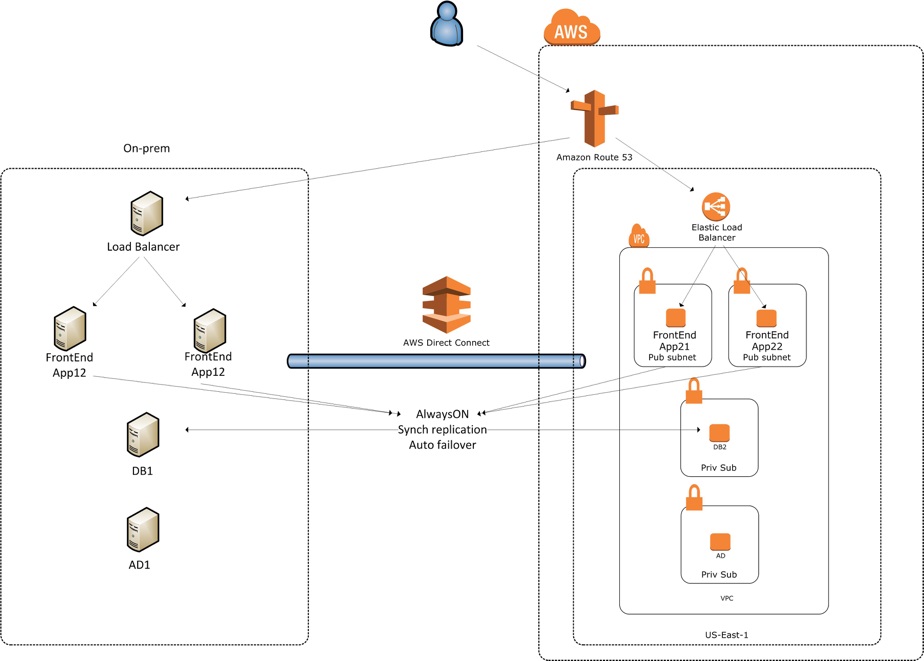AWS Architecture Blog
Category: Amazon Simple Queue Service (SQS)
Design Pattern for Highly Parallel Compute: Recursive Scaling with Amazon SQS
Scaling based on Amazon Simple Queue Service (SQS) is a commonly used design pattern. At AWS Professional Services, we have recently used a variant of this pattern to achieve highly parallel computation for larger customers. In fact, any use case with a tree-like set of entities can use this pattern. It’s useful in a workflow […]
Building Multi-partner integration on AWS using Event-Driven Architecture
September 8, 2021: Amazon Elasticsearch Service has been renamed to Amazon OpenSearch Service. See details. Summary Finserv MARKETS enables customers to buy financial services products such as credit cards, loans, insurance, and investments from various partners. Finserv MARKETS integrates with a large number of partners in real time to provide services to customers. Each partner […]
BBVA: Architecture for Large-Scale Macie Implementation
This post was co-written by Andrew Alaniz , Director of Technology Infrastructure, and Brady Pratt, Cloud Security Engineer, both at BBVA USA. Introduction Data Loss Prevention (DLP) is a common topic among companies that work with any type of sensitive data. One of the challenges is that many people either don’t fully understand what DLP […]
Building a Scalable Document Pre-Processing Pipeline
In a recent customer engagement, Quantiphi, Inc., a member of the Amazon Web Services Partner Network, built a solution capable of pre-processing tens of millions of PDF documents before sending them for inference by a machine learning (ML) model. While the customer’s use case—and hence the ML model—was very specific to their needs, the pipeline that does […]
Serving Billions of Ads in Just 100 ms Using Amazon Elasticache for Redis
This post was co-written with Lucas Ceballos, CTO of Smadex Introduction Showing ads may seem to be a simple task, but it’s not. Showing the right ad to the right user is an incredibly complex challenge that involves multiple disciplines such as artificial intelligence, data science, and software engineering. Doing it one million times per […]
Application Integration Using Queues and Messages
In previous blog posts in this messaging series, we provided an overview of messaging and we also explained the common characteristics to consider when evaluating messaging channel technologies. In this post, we will explain some of the semantics of queue-based processing, its use in designing flexible systems, and how to apply it to your use […]
Halodoc: Building the Future of Tele-Health One Microservice at a Time
Halodoc, a Jakarta-based healthtech platform, uses tele-health and artificial intelligence to connect patients, doctors, and pharmacies. Join builder Adrian De Luca for this special edition of This is My Architecture as he dives deep into the solutions architecture of this Indonesian healthtech platform that provides healthcare services in one of the most challenging traffic environments […]
re:Invent 2019: Introducing the Amazon Builders’ Library (Part I)
This week I’m telling you about a new site we launched at re:Invent, the Amazon Builders’ Library, a collection of living articles covering topics across architecture, software delivery, and operations. You get to peek under the hood of how Amazon architects, releases, and operates the software underpinning Amazon.com and AWS. Want to know how Amazon.com does what it does? […]
Things to Consider When You Build REST APIs with Amazon API Gateway
A few weeks ago, we kicked off this series with a discussion on REST vs GraphQL APIs. This post will dive deeper into the things an API architect or developer should consider when building REST APIs with Amazon API Gateway. Request Rate (a.k.a. “TPS”) Request rate is the first thing you should consider when designing REST APIs. […]
Scale Your Web Application — One Step at a Time
I often encounter people experiencing frustration as they attempt to scale their e-commerce or WordPress site—particularly around the cost and complexity related to scaling. When I talk to customers about their scaling plans, they often mention phrases such as horizontal scaling and microservices, but usually people aren’t sure about how to dive in and effectively scale […]









